Oregon has no shortage of great fishing spots, but figuring out which lakes are actually worth the trip can take some trial and error. I’ve spent a good chunk of time fishing across the state, but I didn’t want this list to just be based on my own experience. So, I asked around. I talked to other local anglers, got their input on where they’ve had the best luck, and even polled our followers on social media to see what spots they keep going back to.
The result is this list of 30 top fishing lakes in Oregon—places that real people fish and recommend. Some are popular and easy to access, others might take a little more effort to reach, but they all offer solid chances at catching something. We looked at things like how often folks are catching fish, what kind of fish are there, and what kind of experience each lake offers. Whether you’re after trout, bass, kokanee, or just a relaxing day with your rod in the water, there’s something here for every kind of angler.
Let’s get into it—here are the lakes that stood out the most, straight from Oregon locals and fellow fishing folks.
30. Lost Lake
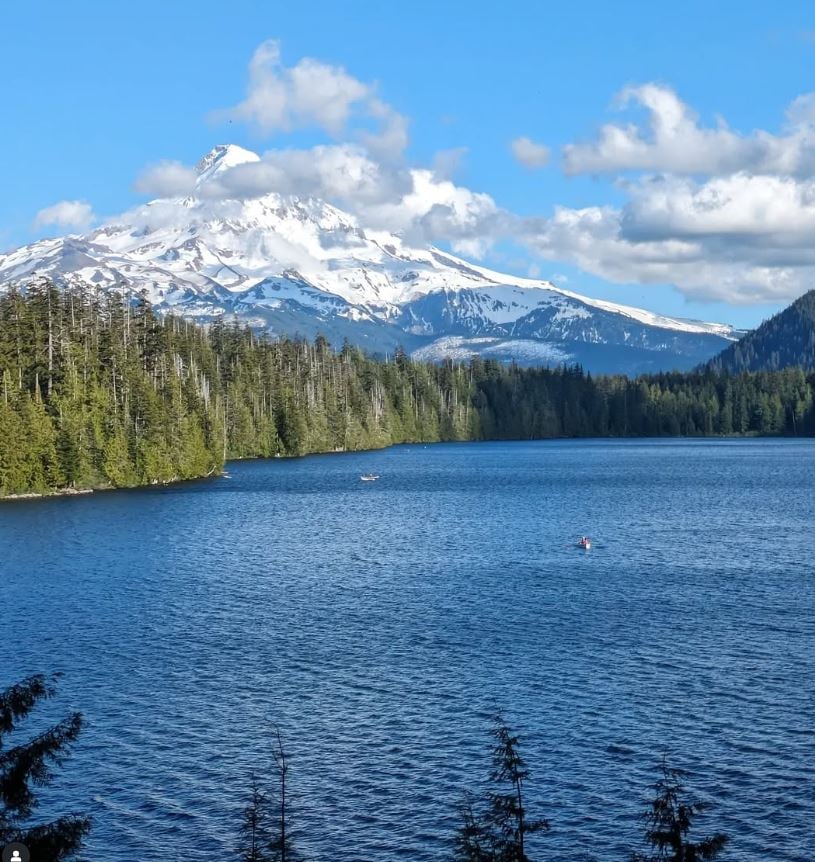
Lost Lake sits near Mount Hood and is a favorite spot for Oregon anglers. It’s easy to reach, with shore access and a boat ramp. It is most popular for fishing rainbow trout, steelhead, and lake char.The water stays pretty cold, which helps keep the fishing good even in the summer. People fish from kayaks, small boats, or just from the bank. You can also camp nearby if you want to make a weekend of it. Early mornings tend to be best, especially if the wind picks up later in the day.
29. Devils Lake

Devils Lake sits right in the middle of Lincoln City, which makes it one of the easiest fishing spots to get to on the coast. It’s a freshwater lake, just a few blocks from the ocean, and it’s stocked with rainbow trout in spring. You’ll also find largemouth bass, catfish, and the occasional perch. Boats are allowed, but plenty of people fish from the shore or the docks. It’s small enough to feel manageable but still has space to spread out. If you’re looking for a lake with a mix of convenience and decent fishing, this one checks both boxes without the hassle.
28. Hebo Lake

Hebo Lake sits in the Coast Range, not far from the Oregon coast. It’s a small lake, but it’s regularly stocked with trout and has an easy-to-reach fishing dock. It is most popular for fishing rainbow trout, cutthroat trout, and coastal cutthroat trout. There’s a nearby campground with basic amenities, so it’s popular for weekend fishing trips. The setting is quiet, with a mix of forest and open space around the water. Because it’s at a lower elevation, you can fish here earlier in the spring than many mountain lakes in the area.
27. Little Lava Lake

Little Lava Lake sits quietly at the edge of the Cascade Lakes Highway, not far from its larger neighbor, Lava Lake. It’s a small, shallow lake surrounded by forest and old lava flows. It is most popular for fishing rainbow trout, steelhead, and tui chub. Fly anglers and folks in float tubes often drift near the inlets where the cooler water flows in. It’s not a place with big crowds or big fish, but it has a kind of low-key rhythm that appeals to people who want a simple day on the water with just enough action to keep things interesting.
26. Hosmer Lake
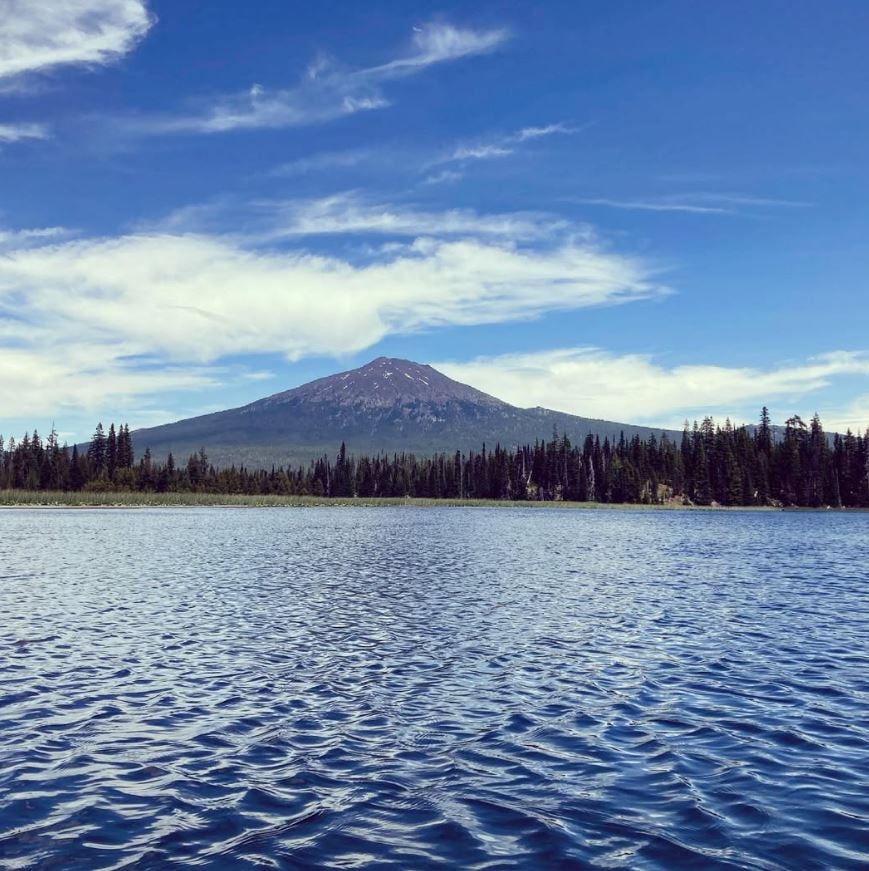
Hosmer Lake sits high in Oregon’s Cascade Range, surrounded by forest and close to Mount Bachelor. What makes it stand out is the crystal-clear water, which makes spotting fish easier than usual. It’s fly-fishing only here, with catch-and-release rules for the big Atlantic salmon and brook trout. There’s no motorized boating allowed, which keeps things peaceful for paddlers and anglers. It’s not stocked heavily, but that’s part of the point—it’s more about the experience than filling a cooler. If you like fishing in quiet, scenic spots with wild-feeling fish, Hosmer is a solid place to spend the day.
25. Lava Lake

Lava Lake sits just west of Bend, Oregon, and is a solid spot for anyone into trout fishing. You’ll mostly find rainbow and brook trout here, and they tend to bite well from spring through early fall. The lake has an easy-to-reach boat ramp, plus a small resort with rentals and supplies. It’s not huge, but there’s plenty of room to cast from a boat or along the shore. The views of the nearby mountains make it a relaxing place to spend a weekend. If you’re looking for a no-fuss place to fish that still feels a bit remote, it works.
24. Green Peter Lake

Green Peter Lake sits up in the Cascade foothills, built mainly for flood control but well-known for fishing. The water’s deep and cold, perfect for kokanee salmon and rainbow trout. You’ll also find chinook and smallmouth bass if you head out early or troll deep. The lake’s shape—with long arms and coves—gives boaters room to spread out. The marina makes it easy to launch and grab supplies. In summer, the fishing stays steady, especially in the morning. It’s a good lake for both serious anglers and folks who just want a calm spot to try their luck for a few hours.
23. Fern Ridge Reservoir

Fern Ridge Reservoir sits just west of Eugene and is one of Oregon’s better spots for warmwater fishing. It is most popular for fishing largemouth bass, common carp, and yellow bullhead. The lake also draws in locals for boating and birdwatching, thanks to nearby wildlife areas. Water levels change with the seasons, so the best fishing usually happens before mid-summer. Access is easy with several boat ramps and shoreline areas. While it’s not the biggest or deepest lake around, it’s reliable and productive if you know when to go. Great for a casual day with rods and a cooler.
22. Clear Lake
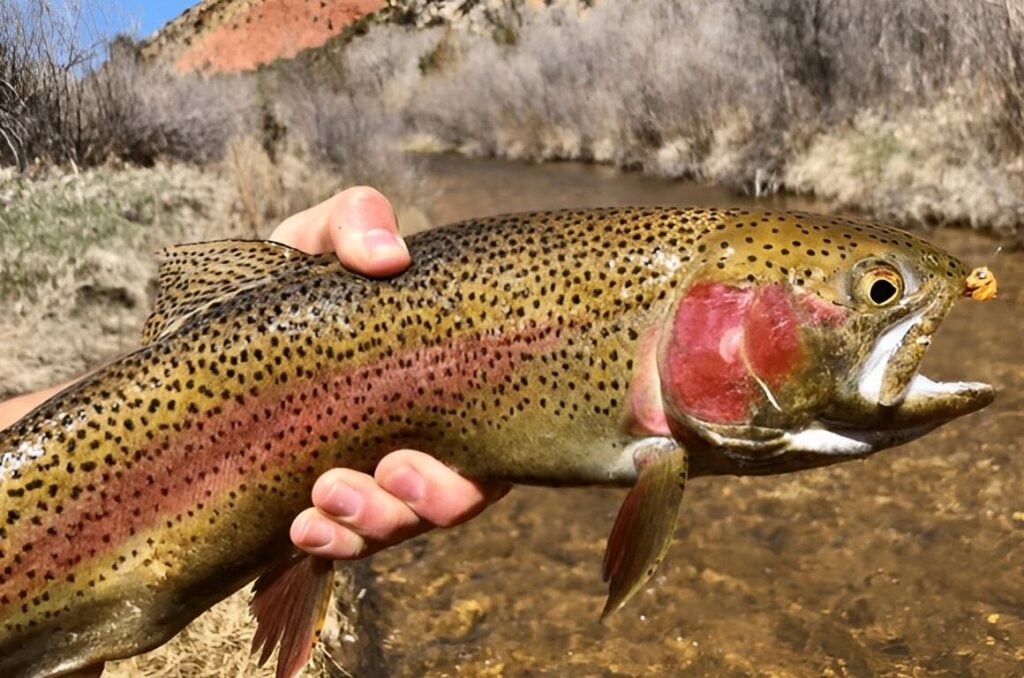
Clear Lake is known for its clear water, but that’s just part of what makes it great for fishing. The lake sits in the Cascades, surrounded by old lava flows and forest. People come here mostly for trout—rainbow and brook trout are stocked often. The water stays cold year-round, which helps keep the fish active. Boats are allowed, but motors are limited to keep things quiet. You can fish from shore, kayak, or take out a small boat. Whether you’re here for the day or staying nearby, it’s a solid pick if you want steady action and beautiful surroundings.
21. Suttle Lake

Suttle Lake sits just west of Sisters, Oregon, and it’s known for being a solid fishing spot year-round. It’s stocked with rainbow trout and also has brown trout that can get pretty big. The lake has easy access and a couple of campgrounds nearby, which makes it popular for weekend trips. The water is usually calm enough for small boats, and there’s a boat ramp if you need it. Early mornings and late evenings tend to be best for fishing here. If you’re after a mix of shore and boat fishing without the crowds, Suttle Lake is worth checking out.
20. Agency Lake

Agency Lake sits just north of Upper Klamath Lake and is part of the same watershed. It’s shallow and wide, with lots of marshy shoreline that’s great for fishing. It is most popular for fishing rainbow trout, great basin redband trout, and brown trout. Water levels shift with the seasons, so spring and early summer tend to be the most productive times to cast a line. The area is quiet and open, with clear views of the nearby mountains. If you’re looking for a less crowded lake to fish in southern Oregon, this one’s worth keeping on your list.
19. Siltcoos Lake
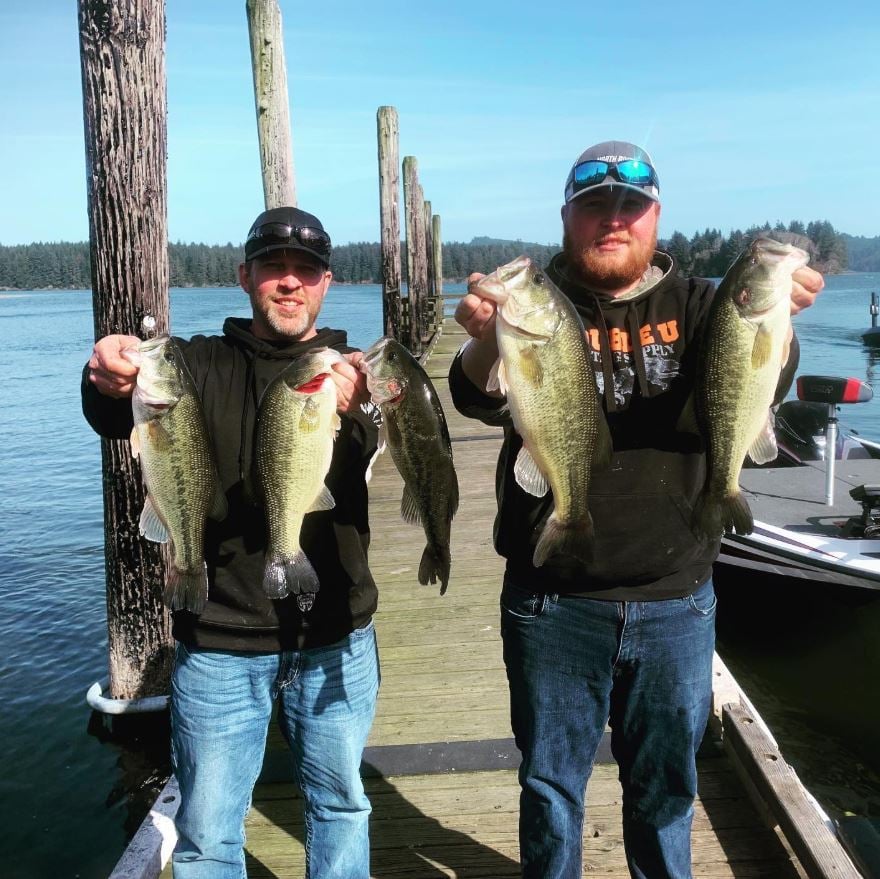
Siltcoos Lake is the biggest coastal lake in Oregon and a solid pick for bass, crappie, and trout. It’s just inland from the ocean, with slow-moving water and lots of shoreline cover. That makes it easy to find fish in different seasons. Largemouth bass are especially popular here, and you can even target them around docks and sunken logs. It’s also known for seasonal runs of coho salmon, which adds something extra during fall. Whether you’re casting from a boat or from shore, there’s plenty of space to spread out. It’s a reliable spot for a relaxed day on the water.
18. Prineville Reservoir

Prineville Reservoir sits in central Oregon and is a solid pick for folks who want more than just a pretty view. It is most popular for fishing smallmouth bass, largemouth bass, and rainbow trout.The water gets warm in summer, which can bring bass closer to shore. It’s also deep enough for trolling if that’s your thing. Early mornings and late evenings are best for action. You won’t find a bunch of loud crowds here, which makes it easier to focus. Whether you’re bank fishing or out in a small boat, you’ve got options. Bring sunscreen—it gets hot out there.
17. Detroit Lake

Detroit Lake sits just east of Salem and is one of the more popular fishing spots in Oregon. Stocked with rainbow trout, and home to kokanee and chinook salmon, it’s a solid choice for both casual and seasoned anglers. The lake is large, with plenty of room to spread out whether you’re fishing from a boat or the bank. The surrounding forest adds to the feel without being too remote. In summer, the water is clear, and access is easy. Fishing usually picks up in late spring and stays good through early fall, depending on water levels and weather.
16. Crescent Lake

Crescent Lake sits at the edge of the Deschutes National Forest and is known for its deep, clear water. It is most popular for fishing rainbow trout, brown trout, and lake char. The lake is big enough for boats, but quiet enough for shore fishing too. You’ll find several campgrounds nearby, and snow sometimes sticks around late into spring. It’s a good spot if you’re after bigger fish or don’t want to fight crowds. Water levels can shift depending on the year, so check ahead before planning a trip. This one’s solid for early summer fishing.
15. Davis Lake
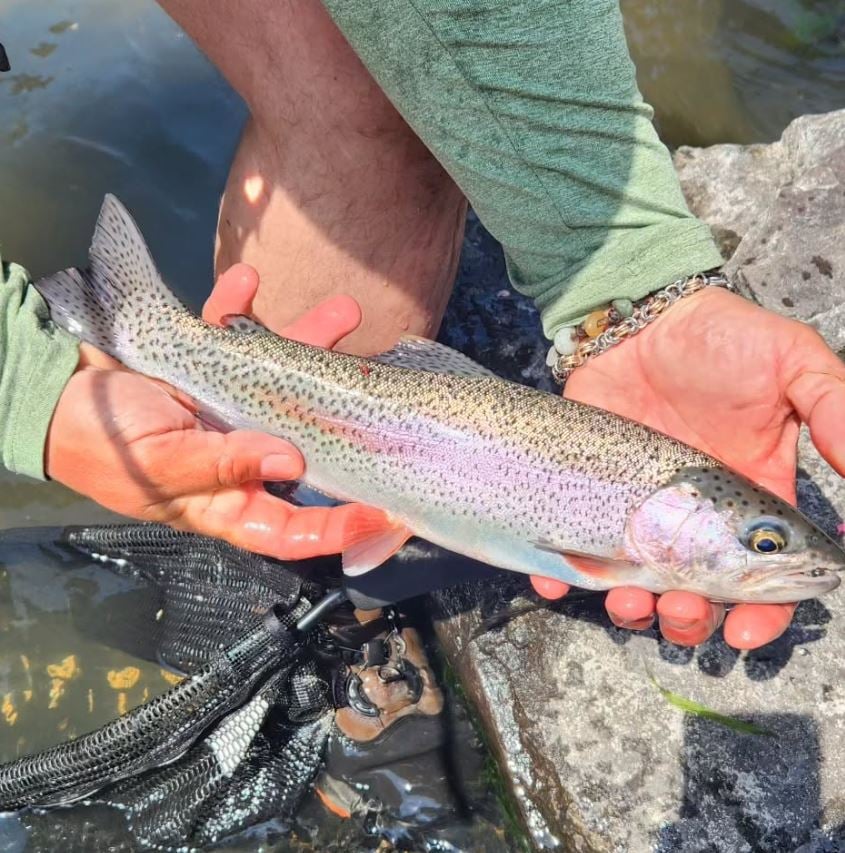
Davis Lake sits near the edge of the Cascade Mountains and offers a different kind of fishing trip. This lake is shallow and can warm up fast in the summer, which makes it better for spring and fall fishing. It’s known for big rainbow trout and a growing population of largemouth bass. Davis is also a fly-fishing-only lake, so you won’t see bait or spin gear out there. The lava flow on the west side gives it a rough, wild look, while the open water and fallen logs provide good cover for fish. You’ll need a float tube or a small boat to reach the best spots since shoreline access is limited. It can be windy, especially in the afternoons, so mornings are your best bet. If you’re looking for fewer crowds and a shot at catching some serious fish, Davis Lake is worth checking out—just plan your trip when the weather works in your favor.
14. Haystack Reservoir

Haystack Reservoir, located in Central Oregon near Madras, offers a diverse fishing experience in a scenic high desert setting. Anglers can target rainbow trout, kokanee, largemouth bass, crappie, and brown bullhead catfish. Spring is prime time, with stocked trout, including occasional large brood rainbows, providing exciting catches. Kokanee fishing improves with cooler, deeper waters later in the season. Bank fishing is accessible, especially near the fishing pier, while boat ramps aid trolling. Water levels fluctuate due to irrigation, so check conditions. The reservoir’s stunning Mount Jefferson views enhance the peaceful fishing getaway.
13. Crane Prairie Reservoir
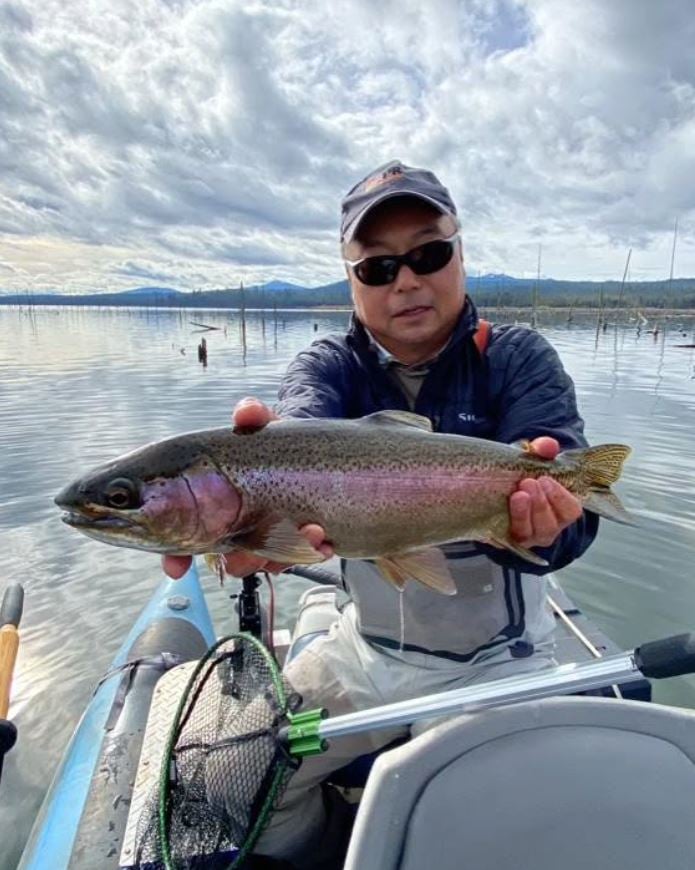
Crane Prairie Reservoir sits in Central Oregon and is best known for its huge rainbow trout, often called “cranebows.” This lake isn’t deep, but it’s full of nutrients, which helps the fish grow fast. The mix of submerged trees and shallow water makes it a great spot for fly fishing, especially in the early morning or late evening. It’s part of the Deschutes River system and surrounded by forest, so it feels quiet and a little wild. Spring and early summer are the best times to go, before the water warms up too much. Besides trout, anglers might catch brook or brown trout, and the occasional kokanee. If you’re fishing from a boat, watch for shallow areas and stumps. If you’re on shore, try near the inlets where cooler water flows in. Whether you’re new to fishing or more experienced, this lake offers a solid mix of challenge and reward.
12. Odell Lake
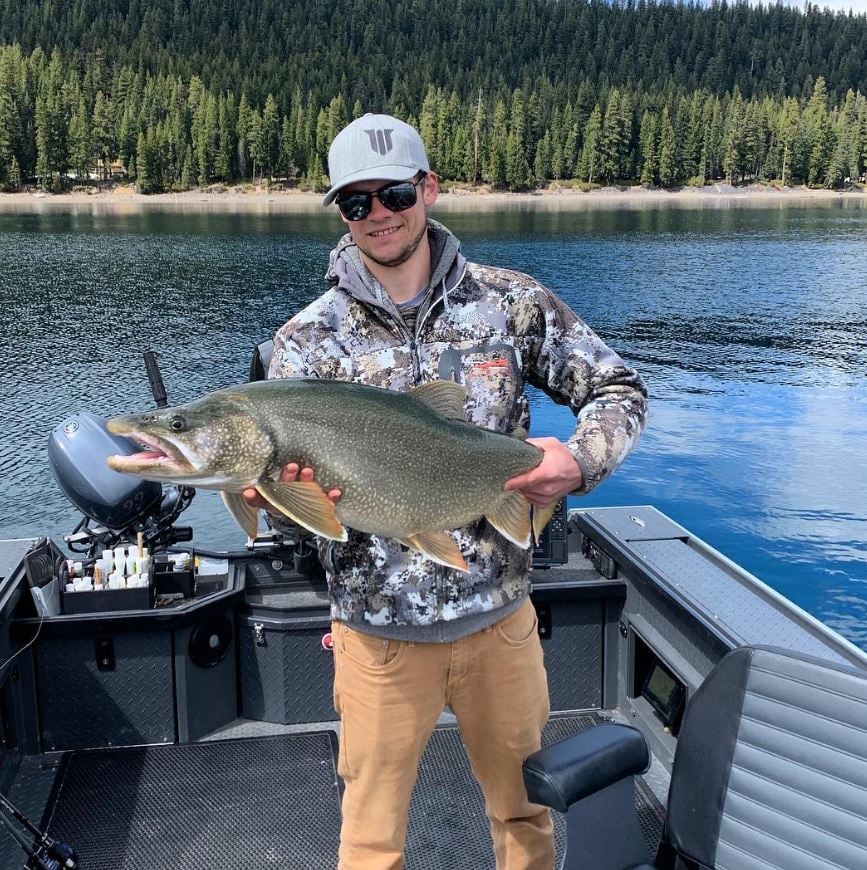
Odell Lake sits just off Highway 58 in central Oregon, surrounded by tall pines and steep hills. It is most popular for fishing lake char, kokanee salmon, and rainbow trout.The lake runs long and narrow, giving boat anglers plenty of space, but there’s also decent bank access near campgrounds and boat ramps. Wind can pick up quickly, so mornings are your best shot if you’re heading out in a smaller boat. The lake’s depth makes it a great place to troll, especially in the summer when fish head deeper. In the spring and fall, you’ll get better chances closer to the surface. You’ll need an Oregon fishing license, and checking seasonal rules is smart since limits and methods can vary. Whether you’re in it for the challenge or just want a quiet day on the water, Odell Lake is worth the trip.
11. Tenmile Lakes
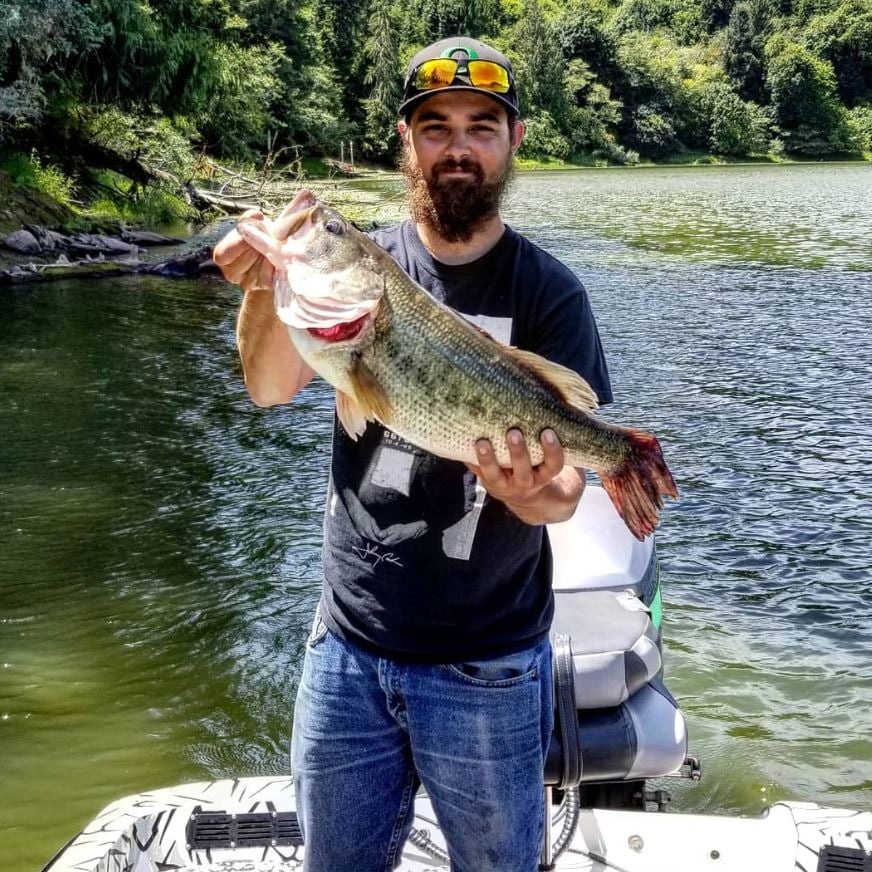
Tenmile Lakes, found near Lakeside on the southern Oregon coast, are actually two connected lakes—North and South Tenmile. They’re known for some of the best bass fishing in the state. Largemouth bass thrive here, and the structure-heavy waters give anglers plenty of places to cast. You’ll also find yellow perch, rainbow trout, crappie, and cutthroat trout if you want to mix things up. The lakes are pretty easy to reach, and there are a few boat ramps and a marina, so access isn’t a hassle. Locals fish here year-round, though spring and early summer are when things really heat up. What makes these lakes different is the variety of fish and how well they hold up during the warmer months. Whether you’re in a boat or casting from the shore, Tenmile offers plenty of action. It’s a solid spot if you’re looking for a lake that consistently delivers without driving too far inland.
10. Upper Klamath Lake

Upper Klamath Lake in southern Oregon is one of the state’s largest freshwater lakes and a solid pick for anglers looking to catch something big. It is most popular for fishing Rainbow trout, Great basin redband trout, and Tui chub. It’s not unusual to hook a fish over five pounds here. The lake is shallow in many spots, but don’t let that fool you — it’s got deep channels and rocky points that hold fish all year. Summer brings more action near the mouths of the streams, while fall can light up the weed beds. Winds can be rough in the afternoons, so morning trips are usually better. Access can be tricky in places, but the payoff is worth it if you’re willing to work for it. Whether you’re casting from a boat or fishing from shore, there’s always a shot at something solid here. Just be ready to move around and try different spots.
9. Crater Lake
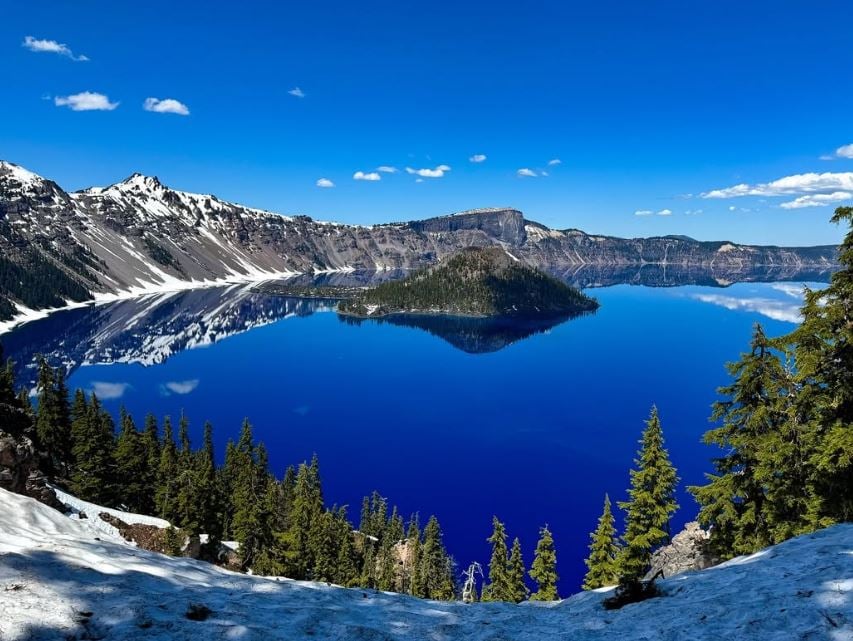
Crater Lake isn’t your typical fishing spot. It’s deep—like, really deep. The deepest in the U.S. That means cold, clear water and two kinds of fish: rainbow trout and kokanee salmon. You won’t find a ton of fish here, but when you catch one, it’s usually a solid size. The lake was formed by a collapsed volcano, which gives it a crazy blue color and steep drop-offs. It’s also way up in the mountains, so weather can shift fast. Summer’s your best bet for calmer conditions, though early mornings can still be chilly. There aren’t any streams feeding the lake, so the fish population is totally natural—no stocking. That’s rare. You’ll need a boat or some strong legs to reach decent spots from the shore. It’s not for everyone, but if you’re into quiet, high-altitude lakes with big fish and no noise, Crater Lake’s worth the effort. Just bring layers.
8. Lake Billy Chinook
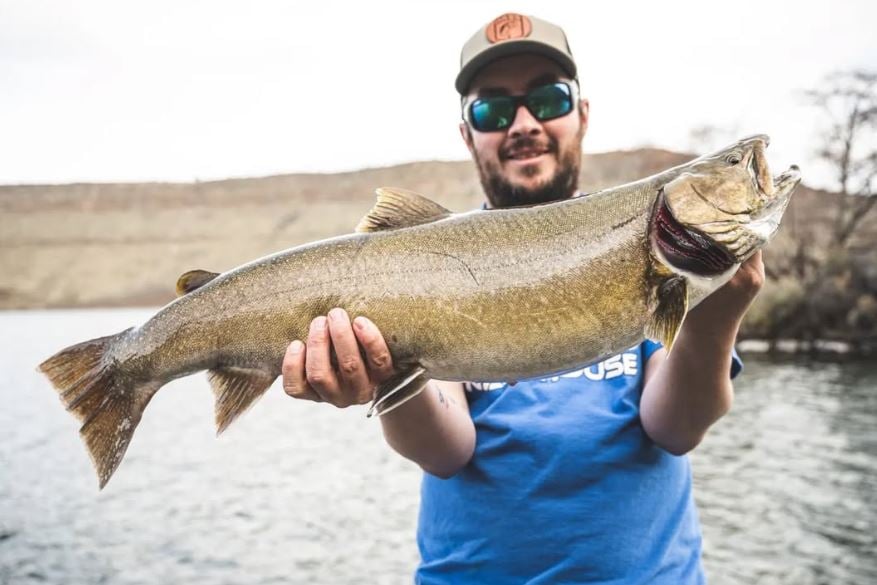
Lake Billy Chinook sits where three rivers meet in Central Oregon, giving it some pretty unique fishing conditions. The mix of water from the Deschutes, Crooked, and Metolius Rivers helps create different zones in the lake. That means you can catch everything from kokanee and bull trout to smallmouth bass and rainbow trout, depending on where you fish. The steep canyon walls around the lake can make boat access easier than finding a good spot on foot, but there are a few bank fishing options too. The lake is also known for being deep and clear, which is great for trolling. Because of how the lake is managed, you’ll want to check the regulations—especially around the Metolius arm. Overall, it’s a solid option if you’re looking for variety without having to bounce between different lakes. It’s not the easiest place to fish, but that’s part of what makes it interesting.
7. Henry Hagg Lake

Henry Hagg Lake sits just outside of Forest Grove and is one of the better year-round fishing spots in northwest Oregon. The lake is stocked with thousands of rainbow trout in the spring and also has largemouth bass, smallmouth bass, yellow perch, and crappie. Some people also come here hoping to hook a cutthroat trout. The water stays cooler than many nearby lakes, which helps with the trout bite during warmer months. There’s a boat ramp, and you’ll see anglers in float tubes and kayaks. Shore fishing works too, especially near the dam or around Scoggins Creek. It’s not far from Portland, so weekends can get busy. Still, it’s a good place if you want a mix of convenience and a decent chance at landing fish. Whether you’re trolling deep or just casting from the bank, it’s a solid place to spend a few hours on the water.
6. East Lake

East Lake sits high in the Central Oregon Cascades, inside the Newberry National Volcanic Monument. It’s a quiet, natural lake formed inside a massive ancient caldera. The lake’s clear, deep water makes it a solid pick for trout fishing. People come here hoping to land big brown trout or rainbow trout, and the kokanee salmon don’t disappoint either. Most anglers fish from a boat, but you can cast from shore too. There’s a mix of campsites, cabins, and a marina nearby, so it’s easy to spend a weekend or longer. Wind can kick up fast, so mornings and evenings are usually better. The lake also has geothermal spots where warm water bubbles up near the edges—makes things feel pretty different than your average cold mountain lake. Whether you’re fishing or just relaxing, East Lake has that high-mountain feel without being too far off the grid.
5. Paulina Lake
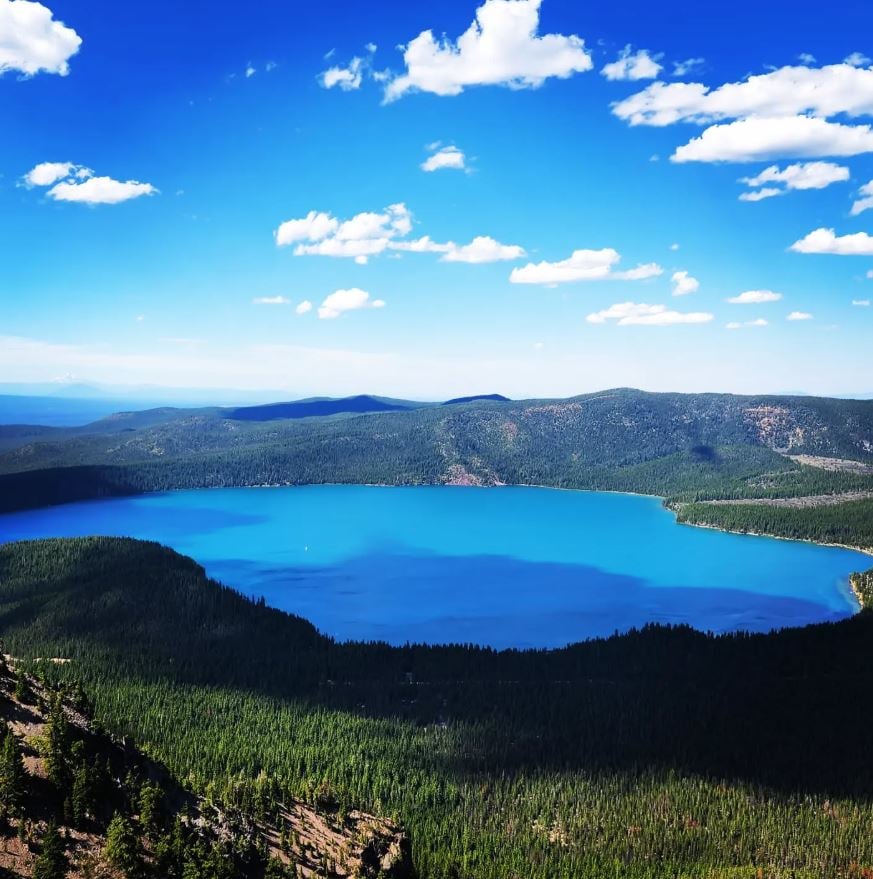
Paulina Lake sits high in the Newberry Caldera, just south of Bend, Oregon. It’s known for its clear water and strong brown trout population. Anglers come here for the chance to hook lake trout, kokanee, and rainbow trout too. The lake is about 250 feet deep and stays cold even in the summer, which helps keep the fishing good. You’ll find a boat ramp and a small resort on the north side, making it easy to get on the water. Trolling works well here, especially near the center or drop-offs along the west side. Fly fishing is decent in the early mornings and evenings, mostly near the shorelines. Paulina Lake is part of the Newberry National Volcanic Monument, so the views are a bonus. Just make sure to check weather conditions and pack layers—mornings can be chilly, even in July. If you like fishing quiet alpine lakes, this one’s worth your time.
4. Wickiup Reservoir

Wickiup Reservoir is one of the largest lakes in central Oregon, and it’s a solid spot if you’re serious about fishing. It’s especially known for big brown trout—some weighing over 10 pounds. The lake also has rainbow trout, largemouth bass, and a good number of crayfish. The water level changes depending on the time of year, since it’s a reservoir used for irrigation. That means fishing can feel different depending on when you go. In spring and early summer, when the water is high, boats have better access. Later in the season, things get a bit shallow, but shore fishing picks up. The area around Wickiup is pretty wide open with pine forests and dirt roads, so expect a more rugged feel. It’s not fancy, but if you like fishing in a place that feels real and a little off the grid, Wickiup is worth the trip. Bring supplies—services nearby are pretty limited.
3. Trillium Lake
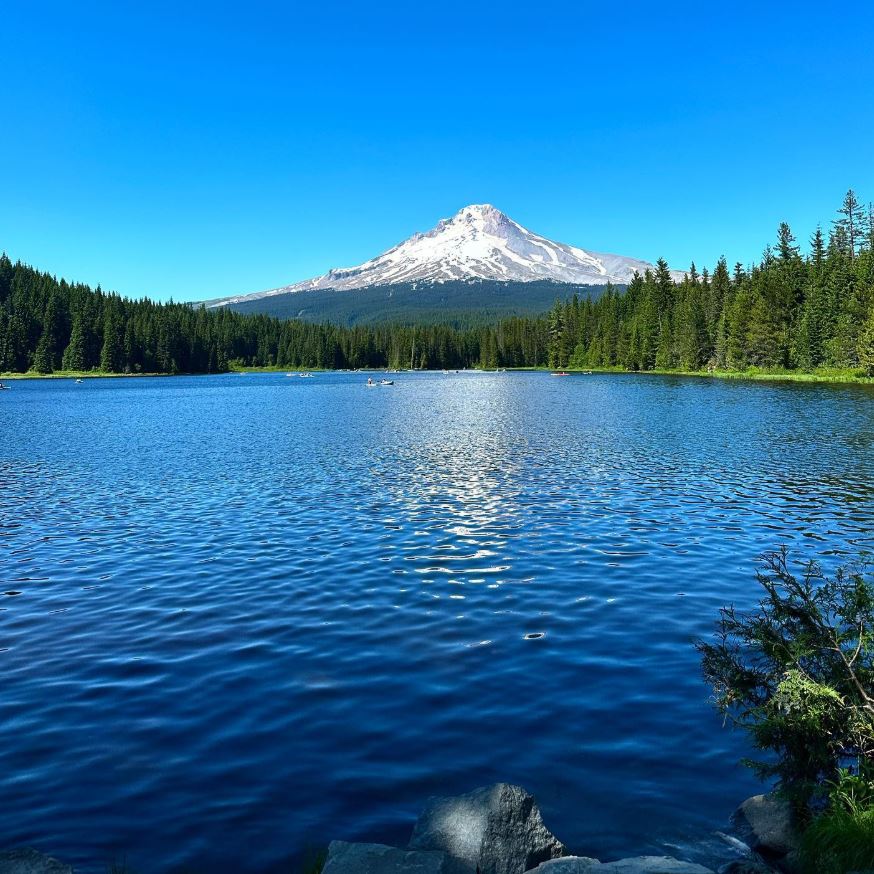
Trillium Lake is a favorite spot for fishing in Oregon, sitting just south of Mt. Hood. It’s a small, easy-access lake that’s regularly stocked with rainbow trout during the warmer months. You can fish right from the shore, paddle out in a kayak, or cast off from the fishing dock near the campground. Early mornings and evenings tend to be best for catching trout, especially with spinners or PowerBait. The lake is also calm enough for kids and beginners, so it’s a solid choice for families or anyone new to fishing. What really makes it stand out is the view—on a clear day, you’ll see Mt. Hood reflecting right off the water. While the fish may be average in size, the setting and convenience make it worth the trip. It’s open seasonally, so check ahead before going, especially in spring or late fall when snow can still be an issue.
2. Wallowa Lake

Wallowa Lake sits at the edge of the Eagle Cap Wilderness in northeastern Oregon. It’s surrounded by tall mountains and forests that change color with the seasons, making it feel like you’re somewhere remote but still easy to get to. The lake itself is deep and cold, which helps keep the fish population strong year-round. Rainbow trout are stocked regularly, and you’ve got a solid chance of pulling in a kokanee salmon if you’re fishing in deeper water. There are also some big lake trout here, but they take patience. The marina makes it simple to rent a boat or launch your own, and there’s plenty of shore access for those who prefer to cast from the bank. Summer is popular, but fall fishing here is underrated—cooler temps and fewer people. If you’re looking for a spot that has a little bit of everything, Wallowa Lake is worth putting on your list.
1. Diamond Lake

Diamond Lake sits just north of Crater Lake and is one of Oregon’s more popular fishing spots. It’s known for rainbow trout, brown trout, and tiger trout.—especially during spring and early summer when the water is cooler. The lake is regularly stocked, which means you have a good shot at catching something, even if you’re new to fishing. There’s a mix of boat anglers and shore casters, and both do well here. You’ll find plenty of room around the lake for fishing, camping, or just relaxing near the water. The views of Mount Bailey and Mount Thielsen in the distance make the whole place feel wide open and peaceful. If you’re planning a trip, early mornings or evenings tend to be best for bites. Mosquitoes can be bad at times, so bring repellent. Whether you’re fishing with kids or just looking for a solid weekend trip, Diamond Lake is a solid choice with steady action and lots of space.
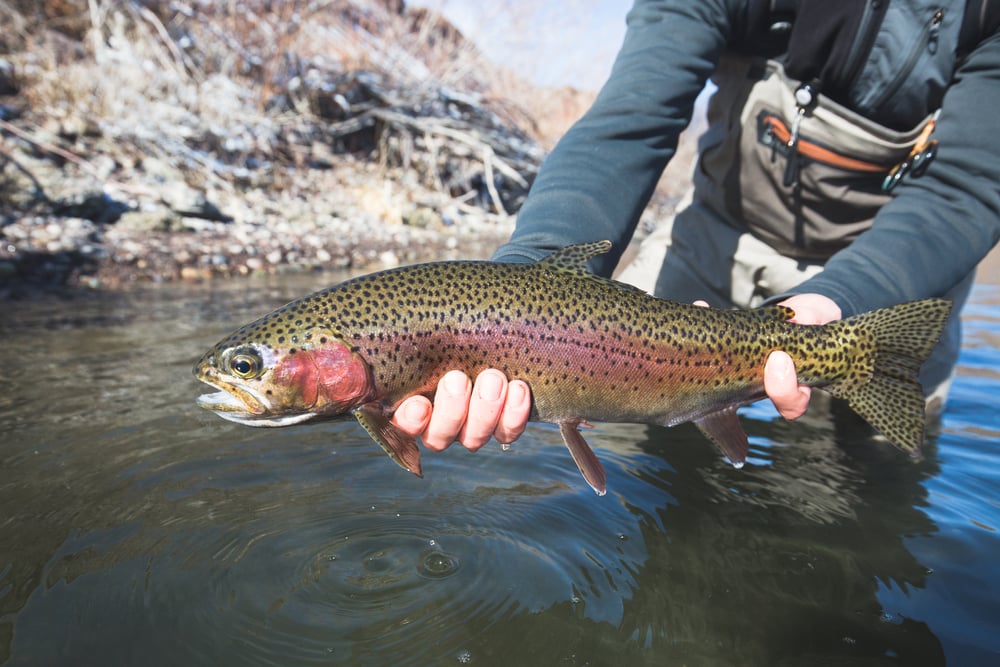
More About Fishing Lakes in Oregon
Oregon has hundreds of lakes open to fishing, from alpine lakes filled with trout to warmer waters stocked with bass, catfish, and crappie. Whether you fish from the bank, a float tube, kayak, or a full-on fishing boat, there’s something for all types of anglers.
Most lakes in Oregon are open year-round, but the action tends to pick up in spring and early summer when trout stocking kicks off. Some high-mountain lakes are frozen or inaccessible until late spring or early summer. It’s always good to check local conditions, especially if you’re heading somewhere remote.
If you’re just getting started, the Oregon Department of Fish and Wildlife (ODFW) website is a solid place to look. They keep an updated trout stocking schedule and weekly recreation reports that are easy to read.
Fishing Lakes in Oregon: FAQ
Do I need a fishing license in Oregon?
Yes. Anyone 12 and older needs a license to fish in Oregon. You can buy a daily, multi-day, or annual license online or at most outdoor retailers. There’s also a free fishing weekend twice a year when no license is required.
What fish can I catch in Oregon lakes?
The most common species are rainbow trout, brook trout, cutthroat trout, kokanee, largemouth bass, smallmouth bass, bluegill, crappie, catfish, and sometimes even tiger trout or lake trout depending on the lake.
When’s the best time to fish lakes in Oregon?
Late April through early July is usually great, especially for trout. Fall can also be productive. Bass fishing usually peaks during the warmer months.
Can I eat the fish I catch?
Usually, yes, but some lakes may have advisories due to mercury or other contaminants. The Oregon Health Authority has an updated list online if you’re not sure.
Are Oregon lakes family-friendly for fishing?
Absolutely. Many lakes have easy bank access, picnic areas, and boat rentals. Some are even stocked specifically for youth fishing events.
Where can I find stocked lakes?
ODFW posts a weekly trout stocking schedule by region. It’s updated regularly and tells you when and where fish are planted.
Do I need special gear?
Not really. A basic rod and reel with some PowerBait or worms will get the job done for stocked trout. If you’re targeting bass or crappie, a light spinning setup with jigs or soft plastics works well.


Add comment